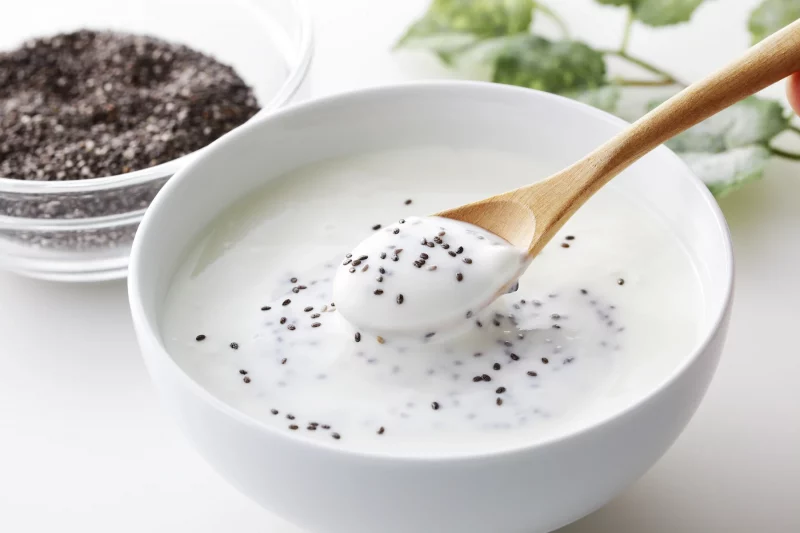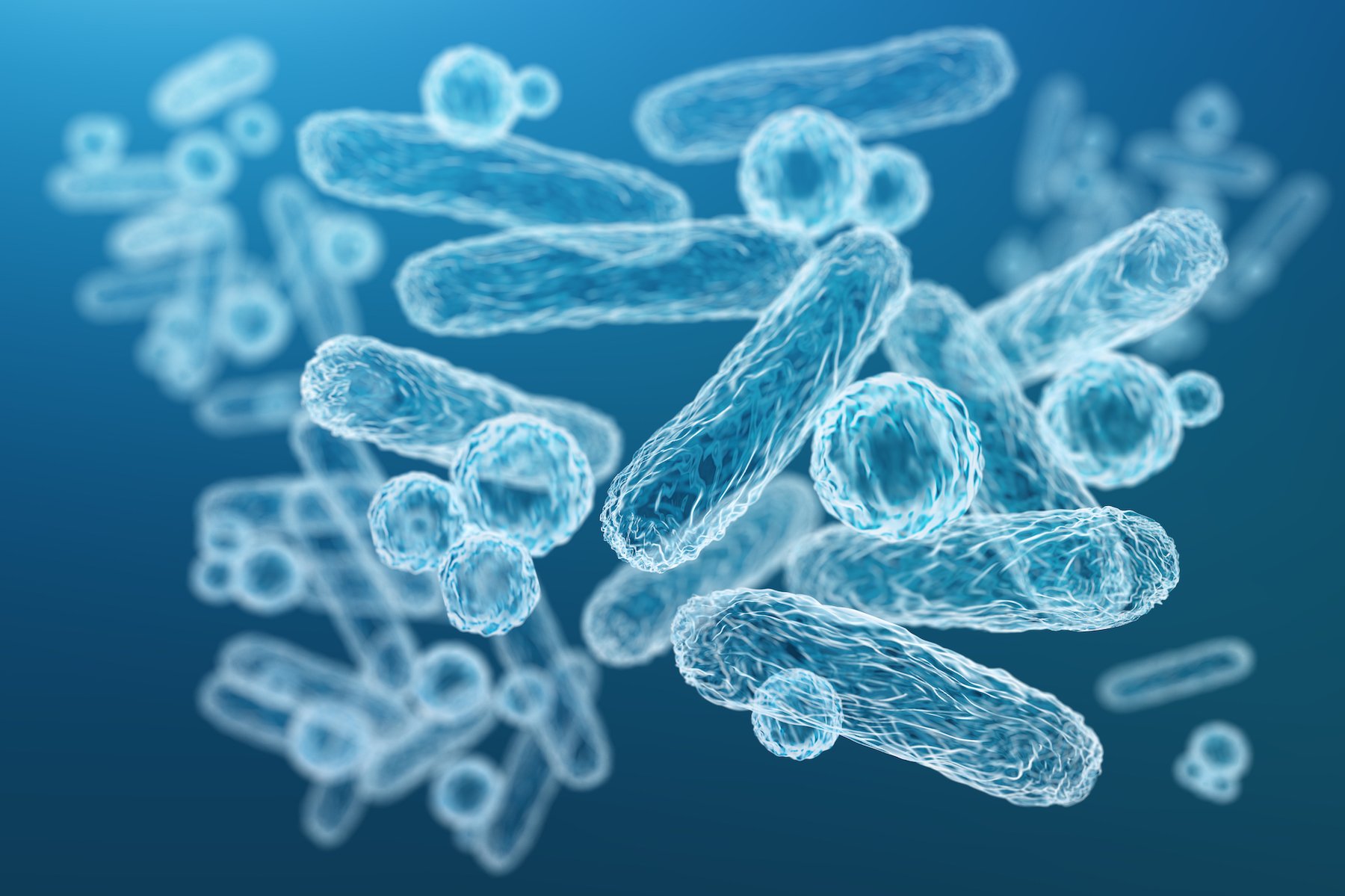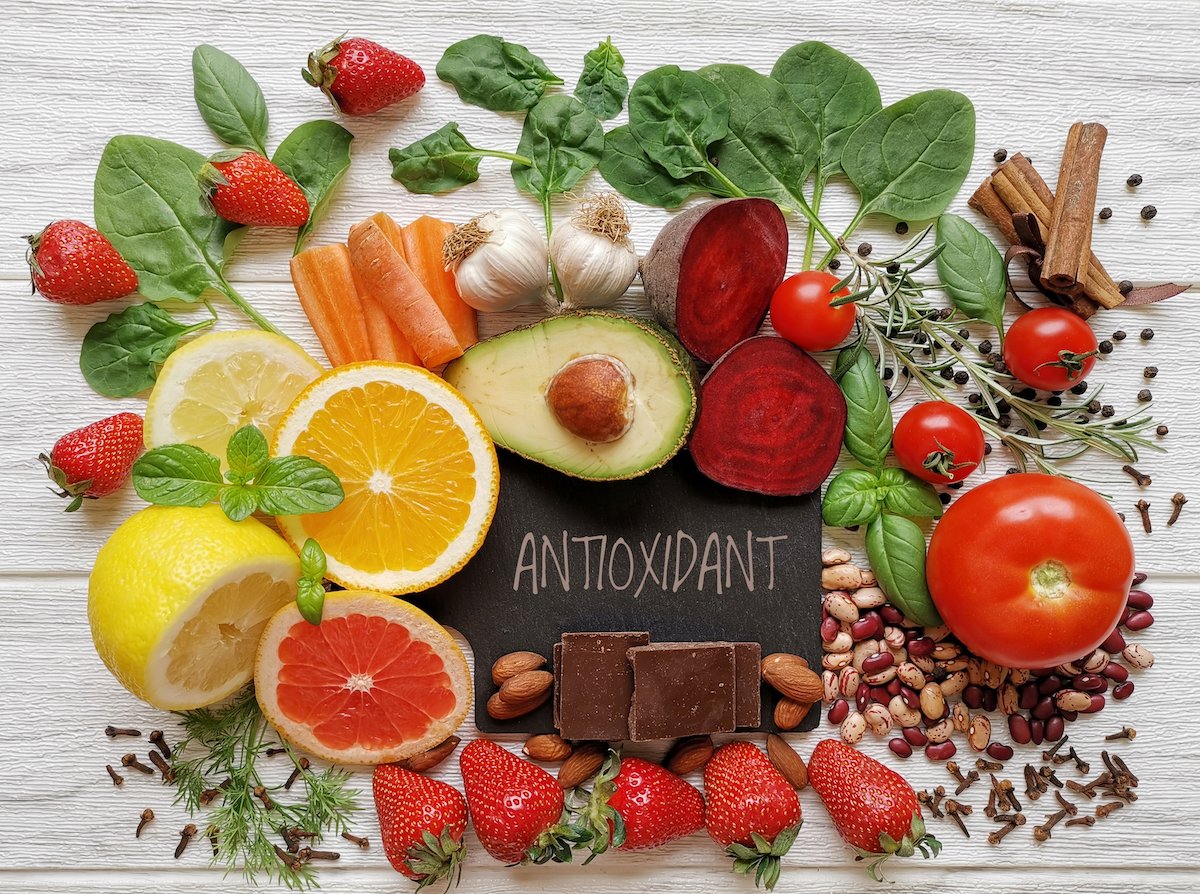Walk into any grocery store, and there’s bound to be an aisle lined with yogurt, kefir, and kombucha––all popular items packed with probiotics.
Probiotics have become an umbrella term for the friendly or “good” bacteria that populate your gut. These live microorganisms are found in fermented foods (like kimchi, miso, and pickles) and supplement form and help keep your gastrointestinal system functioning smoothly. Animal studies (and limited human research) also suggest probiotics can prevent or improve symptoms of conditions like inflammatory bowel disease (IBD), Type 2 diabetes, cancer, and more.
For many people, a probiotic supplement isn’t necessary because we usually get enough from our diet. Generally, we want to get the nutrients we need from natural foods, but sometimes supplements can help. So, how do you know if you’re getting enough probiotics from food? While there’s no fuel gauge to tell you your probiotic levels, poor gut health is a good indicator. If you’re experiencing GI symptoms or are curious about probiotic supplements, it’s always a good idea to chat with a healthcare provider first.
Also, different strains have different roles in the body. For example, some strains of the probiotic Clostridium butyricum keep your large intestine healthy, while Akkermansia muciniphila helps with blood sugar control and preventing weight gain in mice. More on those later.
Together, all these strains of bacteria maintain balance in our bodies and protect us from disease and harmful invaders. If this delicate balance is displaced or depleted, it can have a noticeable impact on metabolic health. Even just a simple course of antibiotics can wreak havoc on your microbiome.
Many other scenarios can cause bacterial imbalances (such as an infection or long-term antibiotic use), making it clear that what goes into your body matters.
The Importance of Probiotics for Metabolic Health
There’s a great deal of scientific literature linking the microorganisms found in your GI tract—collectively referred to as your microbiome—to disease and overall health.
Studies have found decreased healthy bacteria in people with digestive issues, obesity, and food allergies. This suggests taking in probiotics through food or supplements could improve these issues and potentially many more. Probiotics help strengthen the microbiome, introducing more healthy bacteria into it. Once the “good” bacteria colonize your system, it works to maintain homeostasis to keep your digestive system and your immune system strong and healthy.
“In the end, the gut is the hub supplying all the nutrients,” says John Eid, scientist and co-founder of Pendulum, a company that researches and develops probiotic medical food to improve chronic health conditions. (To be classified as medical food, products have to be formulated to nutritionally manage a specific medical condition, such as Type 2 diabetes).
“If things aren’t going well on the nutrient side or there’s an imbalance, it’s hard for other parts of the body to function well. Key strains tend to help with that,” Eid says.
You’ll see all types of probiotic products touting a range of health benefits, although many lack scientific evidence to back such claims up. Here are four probiotic strains proved to impact metabolic health and the specific role each plays in the body.
1. Akkermansia muciniphila
About the strain: Akkermansia muciniphila lives in your large intestine. First documented in 2004, A. muciniphila survives off mucin (proteins that makeup mucus)––which helps protect our gut lining.
How it impacts metabolic health: A. muciniphila functions as a probiotic by living off one energy source (mucin) and producing several molecules that maintain a healthy gut microbiome.
Having more beneficial bacteria helps regulate the thickness of your intestinal lining and improves glucose control. Mouse studies of A. muciniphila have found that it works in conjunction with an immune signaling protein called IFNγ, which affects glucose metabolism. Researchers noted that a lack of IFNγ was linked to increased A. muciniphila, which enhanced glucose tolerance. This, in turn, may lower the risk of weight gain, diabetes, inflammation, and other metabolic disorders. Although more research is needed, A. muciniphila also shows promise as a component of treatments such as cancer immunotherapy.
How You Can Get It: If you’re looking to promote A. muciniphila in your system, avoiding a high-fat diet and heavy drinking may help maintain A. muciniphila levels. Alcohol triggers inflammation, and chronic use overwhelms and can damage your GI tract and organs such as the liver. This can displace or diminish A. muciniphila in the body. Same with a high-fat diet––studies have found too much fat causes gut microbiota to shift, and A. muciniphila happens to be one strain that is sensitive to this. Aiming for a diet plentiful in fruits and vegetables and lean proteins is the best way to avoid too much unhealthy fat in your diet. Foods that can increase the abundance of this strain include cranberries, grapes, and tea. Further, this strain is available as a probiotic from Pendulum.
2. Clostridium butyricum
About the strain: Clostridium butyricum is a bacterial species first found in pig intestines back in 1880. It’s named for the high amounts of butyrate it makes, which we’ll dig into below. Interestingly, C. butyricum can act as both a probiotic and a pathogen in the body; in some cases, it produces toxins that can cause life-threatening diseases in humans and animals. But this is rare and occurs only in isolated instances (for example, botulism in infants). Non-pathogenic strains of C. butyricum have long been studied and found safe and well-tolerated as an additive.
How it impacts metabolic health: It produces a substance called butyrate, which your GI system uses as an energy source. Butyrate, a short-chain fatty acid (SCFA), results from the fermentation of dietary fibers by bacteria in the body. SCFAs like butyrate contribute an estimated 60-70% of energy needed by cells lining the colon, making it crucial for metabolic health.
Studies are limited but research so far in animal and human models shows C. butyricum to be an encouraging therapeutic component for certain cancers, neurodegenerative diseases such as multiple sclerosis, and even psychological conditions. How C. butyricum works behind the scenes isn’t fully known, but researchers theorize it essentially reorders the gut microbiome to increase the number of beneficial bacteria, making the gut function more efficiently.
How You Can Get It: C. butyricum is found in certain foods, but probably not ones you want to eat (like sour milk). It’s naturally found in things like vegetables, cheese, and cultured milk. It’s also found naturally in soil. Research is in the early stages, but studies indicate C. butyricum could be helpful as a probiotic supplement. It’s usually part of a complex or mix of other supplements like Bifidobacterium infantis, which we’ll look at later.
3. Anaerobutyricum hallii
About the strain: Also a butyrate producer, Anaerobutyricum hallii is a common microbe that helps control glucose and maintain stability and balance within your intestinal tract. This bacteria was first described in 1974 (relatively recent, for the science world) as Eubacterium hallii and was redesignated as Anaerobutyricum hallii in 2018.
How it impacts metabolic health: Research is limited on A. hallii in humans, but animal studies and lab research point towards it being an important piece of the puzzle in preventing and treating conditions such as inflammatory bowel disease (IBD), which includes ulcerative colitis and Crohn’s disease. Studies show gastro health is tied to butyrate, and A. halli is thought to work by replenishing the body’s butyrate supply. It does this by absorbing and breaking down acetate, lactate, and glucose. As this happens, fermentation occurs, which creates butyrate and hydrogen as final products.
How You Can Get It: A. halli is available as a medical-grade probiotic supplement from Pendulum and comes combined with other bacterial strains, including Akkermansia muciniphila and Clostridium butyricum. Plant-based foods and those high in fiber, such as whole grains, beans, and artichokes, promote A. halli.
4. Bifidobacterium infantis
About the strain: Arguably one of the most well-studied probiotic strains, B. infantis is part of a family of bacteria isolated more than a century ago. As the name suggests, this bacteria is plentiful in infants and is passed down from mother to baby.
How it impacts metabolic health: Once this beneficial bacteria colonize a baby’s GI tract, it plays an essential role in developing immunity and reducing inflammation. Studies have found that a lower quantity of Bifidobacteria is linked to asthma and autoimmune diseases. More recent research is exploring the use of B. infantis for adults, too. In one study, adults who took a supplement containing B. infantis showed reduced inflammation markers compared to people who didn’t.
Some research suggests the anti-inflammatory properties of B. infantis may alleviate symptoms of IBS, ulcerative colitis, skin conditions like psoriasis. Studies have found psoriasis and obesity are linked, despite being completely different conditions. People with psoriasis have a significantly higher risk of obesity, and obesity is also a risk factor for psoriasis. So if gut microbes affect our GI systems, perhaps introducing healthy ones could have a positive domino effect for people with comorbidities (multiple diseases). Because our GI systems are packed with thousands of diverse “good” bacteria types, all with different functions in the body, it’s theorized keeping these healthy and balanced could impact (and hopefully improve) diseases that seem unrelated.
How You Can Get It: The best source of B. infantis is from foods (especially fermented ones), including cheeses, yogurt, sauerkraut, and other dairy products. It’s also available as a supplement. Many drugstores and online vendors offer B. infantis (typically combined with different healthy bacterial strains), so make sure to double-check the ingredients and buy from a brand you trust.
Three More Things You Can Do to Support a Healthy Microbiome
Probiotic supplements aren’t for everyone. If you’re generally healthy and free of any GI-related problems, you likely are getting enough from your diet and don’t need a supplement. Another downside to supplements is cost. Prices range, but specialized products can cost up to $195 for a 30-day supply. There is also a significant research gap in providing solid evidence on the process behind how probiotics benefit us.
Whether you’re taking probiotic supplements or not, there are lifestyle changes you can make to help improve and maintain a healthy gut. Here are three more things you can do to support a healthy microbiome:
- Diversify your diet: Incorporate different foods into your diet and make sure it’s rich in fruit, vegetables, and high-fiber foods. Avoid processed foods, sugary drinks, and any ingredients that could cause an adverse reaction. For example, food that’s too greasy or spicy could exacerbate symptoms in someone with IBD.
- Eat fermented foods: Fermented foods are full of good bacteria that help decrease inflammation and maintain balance in the gut. Yogurt, sauerkraut, kefir, kimchi, and kombucha are all examples of fermented foods that increase the diversity of your microbiome and strengthen it against harmful bacteria.
- Exercise regularly: You might associate exercise with weight loss and a sunnier disposition, but getting physical activity is also crucial for boosting metabolic health. Regular exercise increases blood flow and activates tissues all over the body, which reduces the risk of disease. Studies have found that exercise promotes a microbial composition that generates butyrate, which we’ve mentioned is an abundant source of energy and helps protect the digestive system. Exercise also prevents obesity. As we know, obesity disrupts the function and composition of delicate gut microbes, so exercise could help lower that risk. So whether it’s yoga, long walks, running, or a HIIT workout, physical activity can significantly impact gut function.
If you’re going the route of probiotic supplements, do it in tandem with diet and exercise. Probiotics are not a replacement for any medications you may be taking. It’s also a good idea to talk to a healthcare professional beforehand so they can help find what works best for you. As we’ve seen, specific strains have specific effects, so it’s worth putting thought into what you feed your gut.
This post was produced with help from Pendulum Therapeutics, which makes probiotic supplements to support the microbiome and improve metabolic health. Levels has no affiliate relationship with Pendulum and receives no payment if you purchase anything from the link above.








